REBOOTING FOOD
Finding new ways to feed the future
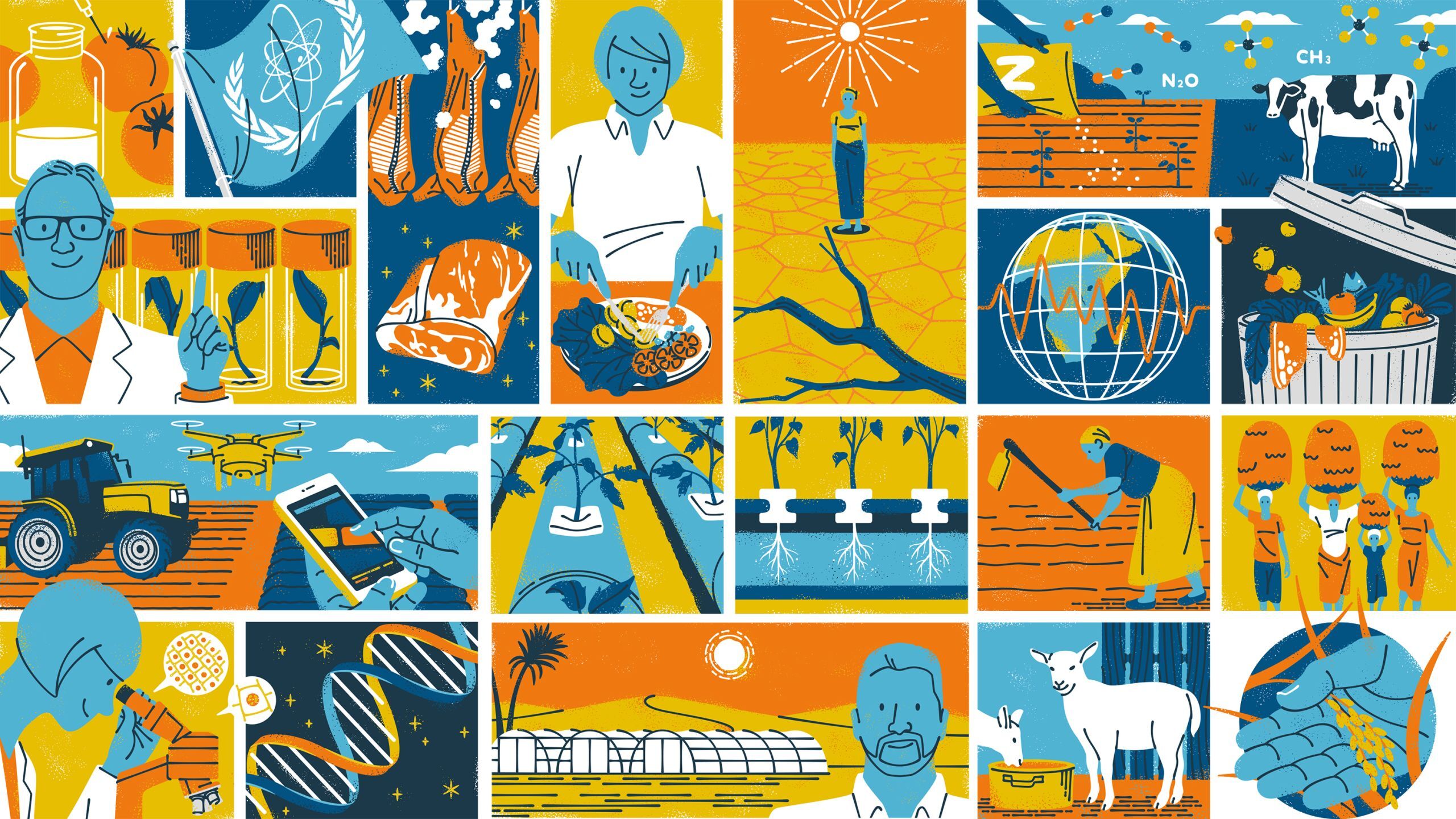
Banana trees that fit in a test tube. Burgers made without a cow in sight. Fish farmed in the desert. Robots picking fruit.
Welcome to the brave new world of food, where scientists are battling a global time-bomb of climate change, water scarcity, population growth and soaring obesity rates to find new ways to feed the future.
With one in nine people already short of enough food to lead a healthy, active life, supporters pushing for a Second Green Revolution argue without major changes hunger will become one of the biggest threats to national security and human health.
To tackle this looming crisis, scientists and agricultural experts are looking to the future - and back to the past - to find innovative ways to produce food.
But they admit getting billions of farmers globally - and consumers - to change will be a battle.
Bruce Campbell, director of the CGIAR Research Program on Climate Change, Agriculture and Food Security (CCAFS) - a global network of scientists - said agriculture had to change to meet global goals on climate change and ending poverty and hunger.
"You need a revolution in the agriculture and food system within the next decade because without it, we're never going to achieve any of the really important (global) goals that we've set," Campbell told the Thomson Reuters Foundation.
A visit to a series of white, low-rise United Nations-backed laboratories 35 km (22 miles) outside Austria's ornate capital Vienna provides a glimpse into the food of tomorrow's world.
Here, in laboratories and greenhouses packed with genetic sequencing machines, robotic equipment and plants and insects of all sizes, scientists are using nuclear technology to stop insects reproducing and to spur disease-resistant banana trees.
Sub-Saharan Africa has for decades struggled to control bloodsucking tsetse flies that kill more than 3 million cattle and other livestock each year.
Meanwhile in Southeast Asia and Australia, the fungal disease fusarium wilt threatens to wipe out bananas, a global favourite rich in micronutrients.
WATCH: Science Bites: Altering the sex life of the fruit fly
But the labs, set up by the U.N. Food and Agriculture Organization (FAO) and the International Atomic Energy Agency (IAEA), have helped Senegal almost eradicate tsetse flies in one area and created bananas that can stand up to pest threats.
"Under climate challenge ... we face many challenges in agricultural production. One of the major issues is more and emerging diseases for plants and animals, and insects," said Qu Liang, director of the joint FAO/IAEA division.
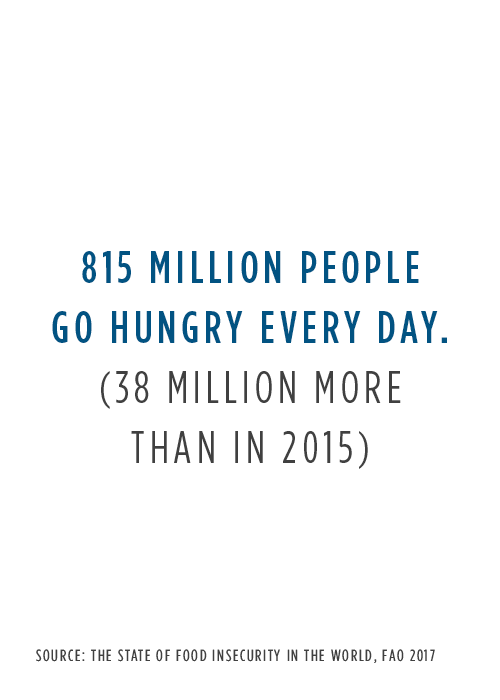
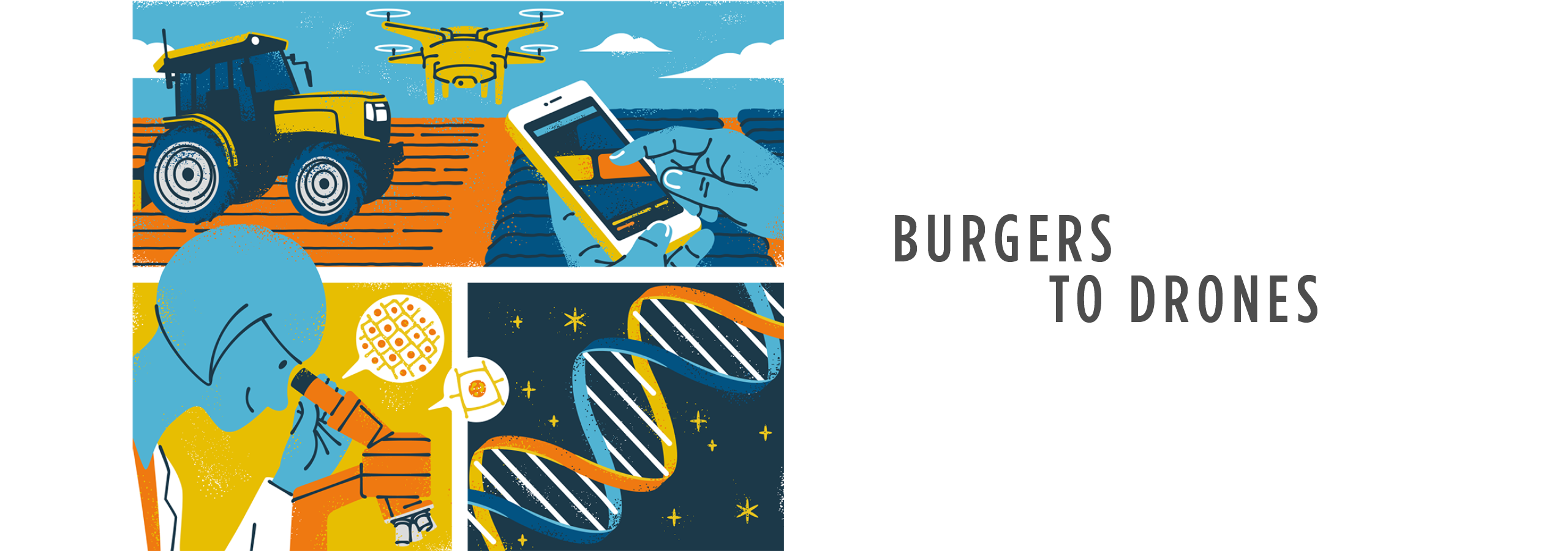
Scientists are also working on other innovations - from gene editing of crops and lab-grown meat to sensors on drones and tractors - that could help to reboot the world's food system and fundamentally change how food is grown, distributed and eaten.
But technology is only part of the answer, experts caution. Finding sustainable ways to overcome escalating challenges will require everything from delving into culture and tradition to rethinking subsidies and politics around food, they say.
However almost everyone agrees that change is needed.
"Our agri food system is at a critical stage. It must be re-shaped," Shenggen Fan, director general of the Washington-based International Food Policy Research Institute (IFPRI), told the Thomson Reuters Foundation.
Food monopolises a huge share of scarce resources, Fan said, and numbers bear this out.
Crops take up 11 percent of the land surface, livestock grazing covers 26 percent of ice-free land, and farming accounts for about 70 percent of all water used, according to the Organisation for Economic Co-operation and Development (OECD).
Livestock generate more greenhouse gas emissions than transport, according to the FAO, accounting for about 14.5 percent of world emissions.
Faced with growing climate concerns, many people - including billionaire philanthropist Bill Gates - are pushing for a Second Green Revolution to develop crops that can be grown in droughts and resist new pests and diseases.
The first Green Revolution, which peaked in the 1960s, dramatically boosted harvests in poor parts of the world by introducing high-yielding seeds, fertilisers and irrigation which helped stave off famine in hungry parts of the world.
But the industrial farming era it spurred has failed both consumers and the environment, critics say, by leading to a food system that cripples the environment, contributes to climate change, and concentrates wealth in multi-national companies.
"We live in a changing world and we are limited in resources, in terms of land, water, fertiliser," said Ivan Ingelbrecht, head of the plant breeding and genetics laboratory in Vienna.
"So having sustainable food production systems is very important," he said, holding a test tube containing a miniature banana tree in his hand.
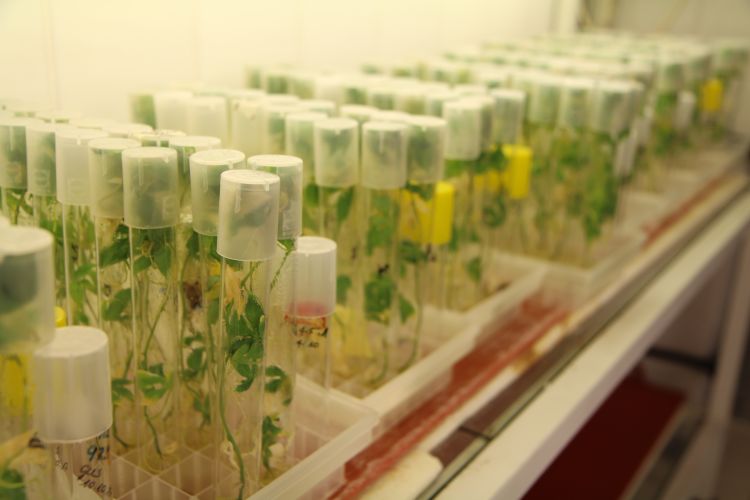
Samples of plants at the joint FAO/IAEA laboratories outside Vienna, Austria, Mar 20, 2018. Thomson Reuters Foundation/Thin Lei Win
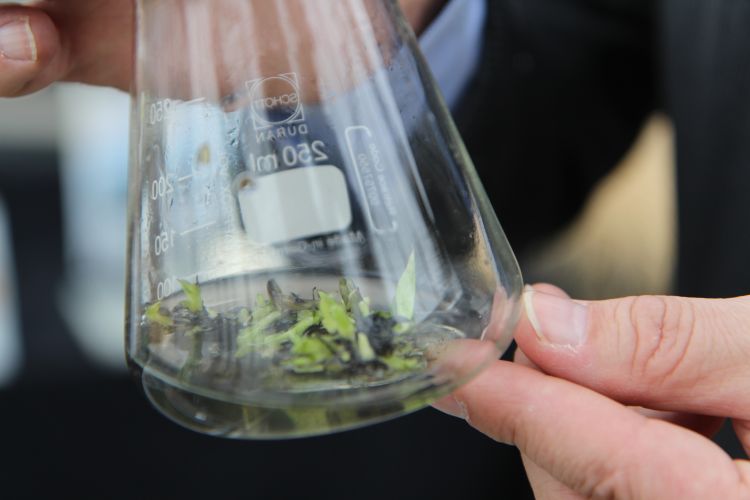
Ivan Ingelbrecht, head of the plant breeding and genetics laboratory, holds a miniature plant in a conical flask at the joint FAO/IAEA laboratories outside Vienna, Austria, Mar 20, 2018. Thomson Reuters Foundation/Thin Lei Win
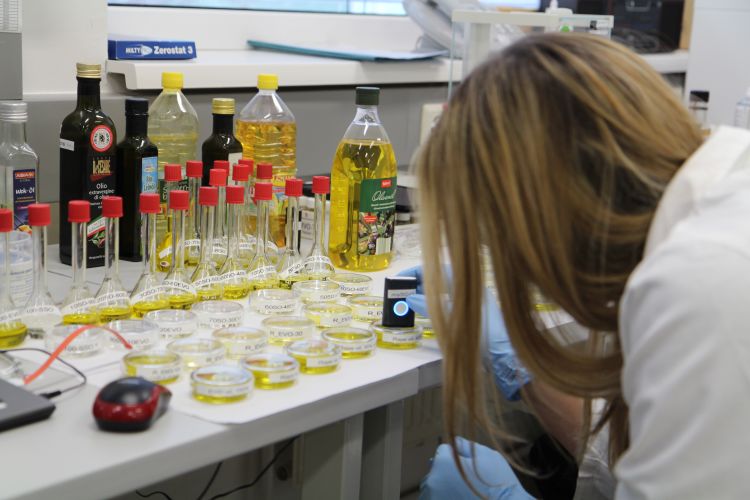
A technician tests olive oil using a handheld device at the joint FAO/IAEA laboratories outside Vienna, Austria, Mar 20, 2018. Thomson Reuters Foundation / Thin Lei Win
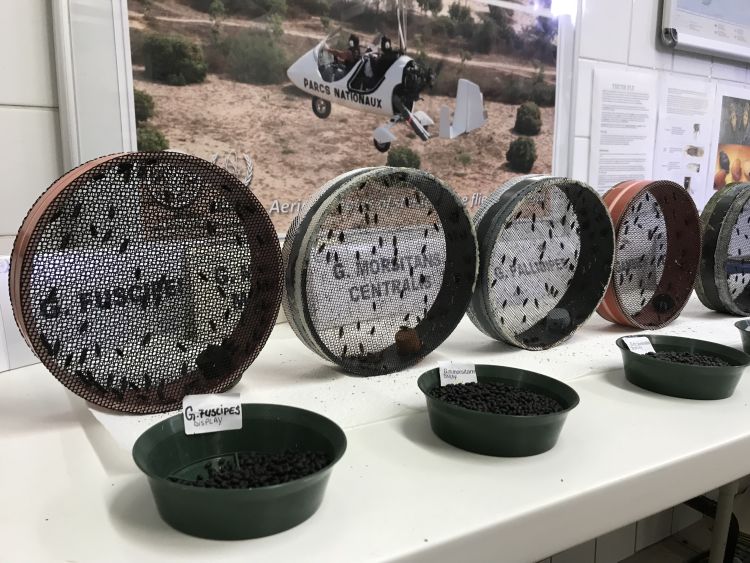
Tsetse flies at the joint FAO/IAEA laboratories outside Vienna, Austria, Mar 20, 2018. Thomson Reuters Foundation/Thin Lei Win
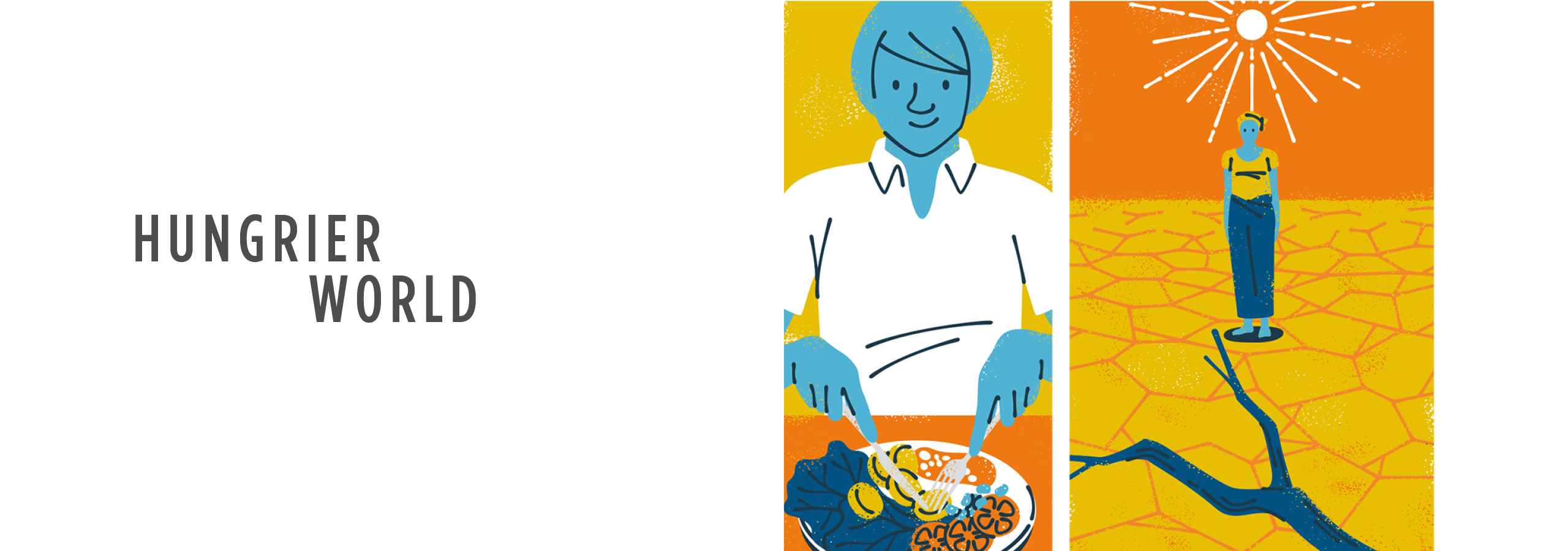
One problem, experts say, is that agricultural practices can be hard to change. Nearly 2.5 billion people are involved in small-scale farming, managing about 500 million small farms, according to the International Fund for Agricultural Development (IFAD).
"Agriculture has kind of been stuck for the last 500 years," said Andy Jarvis, research director at the Colombia-based International Centre for Tropical Agriculture (CIAT).
Machinery and better crop varieties have made agriculture more productive but fundamental problems remain, from reliance on heavy manual labour to difficulties managing pests and diseases, he added.
The world's population, meanwhile, has grown both in size and bulk, with no signs of the upward trend abating.
Of the world's 7.6 billion people - a population projected to reach 9.8 billion by 2050 - about 815 million people go hungry daily while 2 billion are overweight or obese, sending health costs soaring.
Among them is Yatzyri Martinez, aged six from Mexico City, who weighs 38 kg (84 pounds), loves spaghetti and fast-food snacks, and comes from a family plagued by type 2 diabetes.
Salvador Villalpando, a specialist doctor who treats her at a child obesity clinic at the Federico Gomez Children's Hospital in Mexico, one of the world's fattest nations, said keeping people from becoming obese is the aim.
"When you get to treat obesity, you're one day too late," he said.
Mexico is not alone. Adult obesity rates are increasing in all of the United Nation's 193 member states, including in sub-Saharan Africa and South Asia where the focus for decades was eradicating hunger.
Globally, about 40 percent of adults are overweight and 13 percent obese, says the World Health Organization (WHO), with the surge in obesity in the last three decades presenting a major public health epidemic in both poor and rich nations.
Growing demand for meat and dairy as countries become wealthier is placing a heavier demand on world food systems, driving climate change as land is stripped of forests and ploughed. The volume of food transported around the world also is exacerbating global warming.
However, calls to use more pesticides and fertilisers to get more food from the same land are based on wrong assumptions, said Emile Frison of the International Panel of Experts on Sustainable Food Systems (IPES-Food).
He said there is already enough food available to feed the planet today and in 2050 - but it's in the wrong places or wasted.
Globally, one third of all food produced - worth nearly $1 trillion a year - is binned or otherwise wasted, according to the FAO.
"It's a matter of access, of waste, of consumption models that are unsustainable. Recommending a technology fix approach is certainly going in the wrong direction," Frison told the Thomson Reuters Foundation.
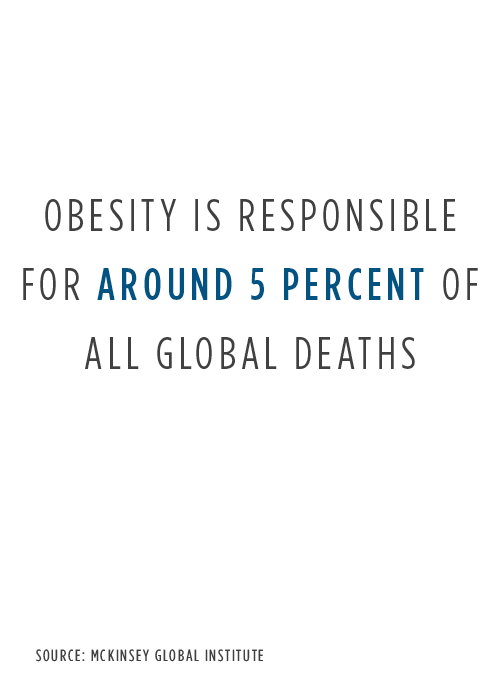
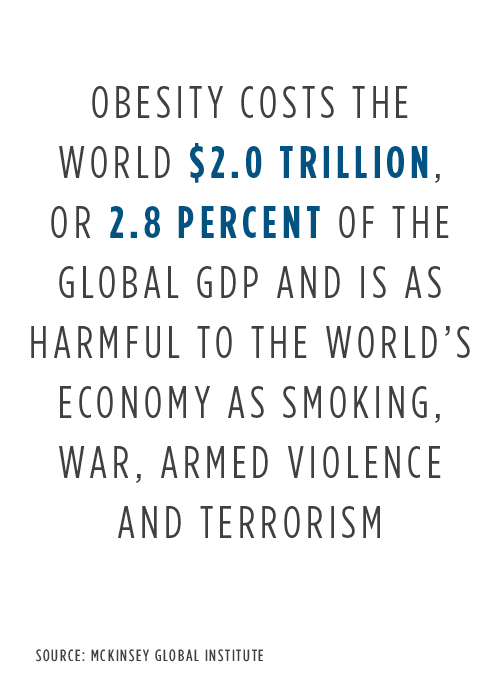

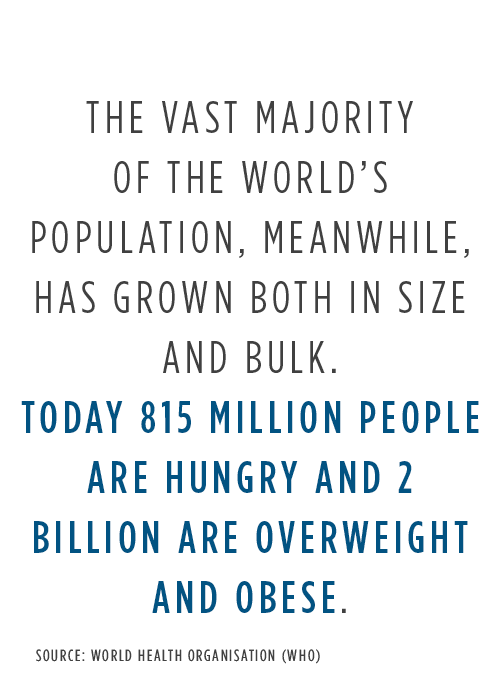
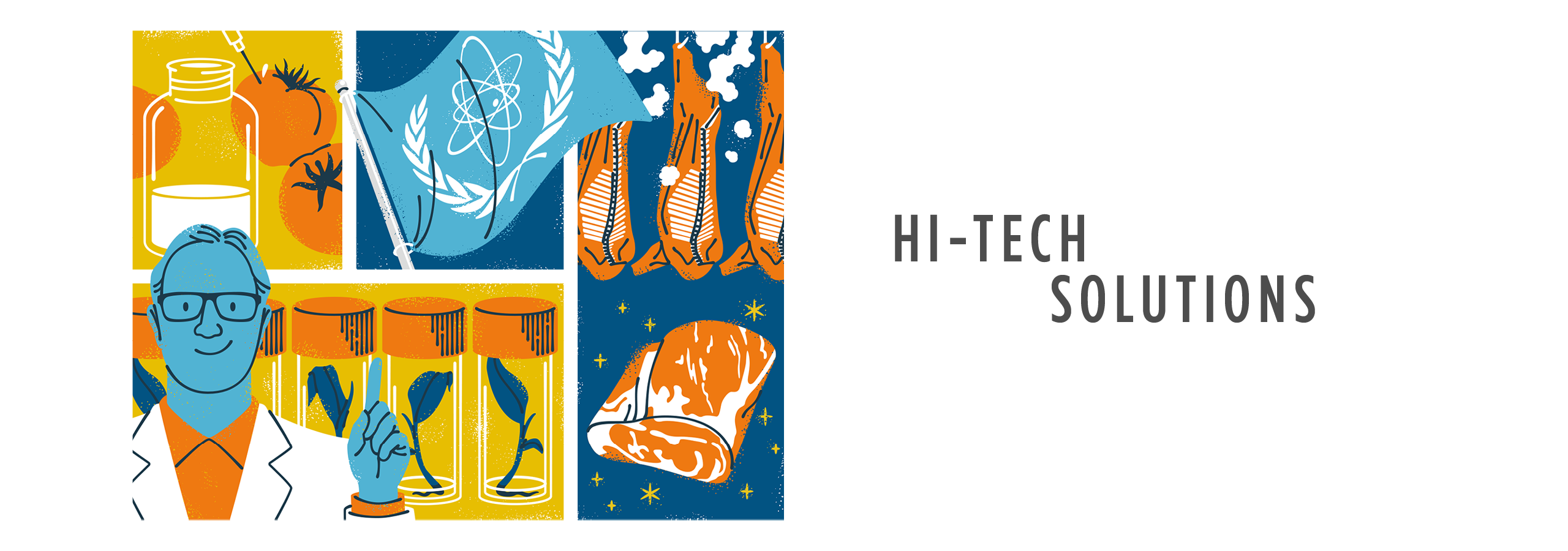
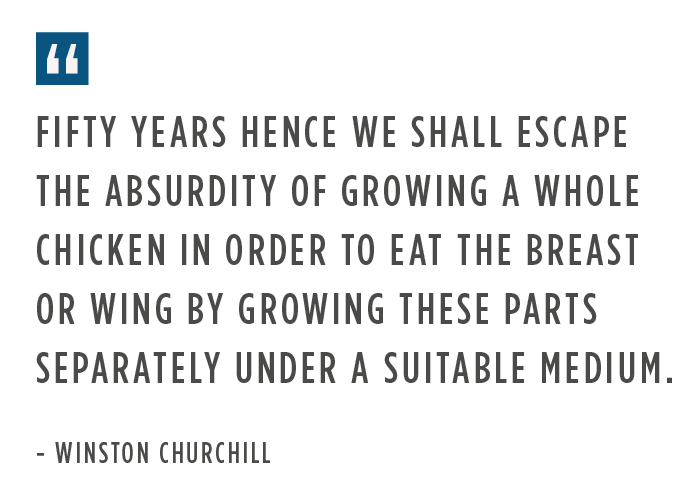
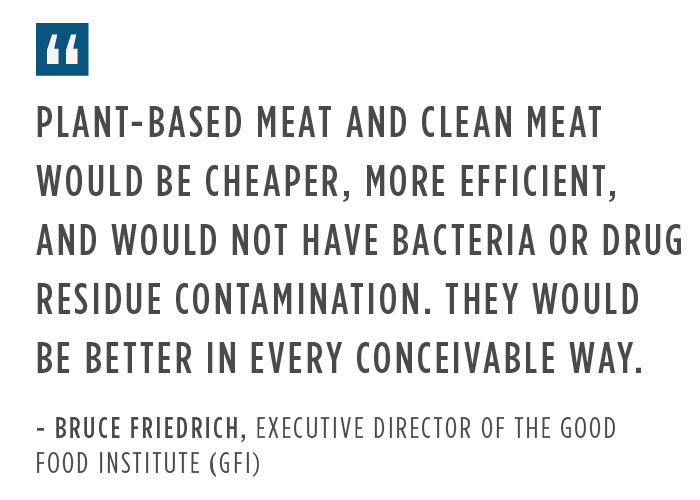
James Rogers, CEO of Apeel Sciences, a California-based start-up company, agrees the planet is producing more than enough calories to feed everyone. But he believes technology can help resolve some key issues, particularly food waste.
His company produces a plant-based coating that comes in powder form and, when applied with water, can double the shelf life of fruit and vegetables without refrigeration so farmers in remote areas can get them to market without spoilage.
The coating is being tested on mangoes in Kenya and cassava in Nigeria, funded by the Bill & Melinda Gates Foundation.
Technology is also helping meet the growing demand for meat, without more emission-producing livestock. The ideas harken back to predictions former British Prime Minister Winston Churchill made in a 1931 essay.
"Fifty years hence we shall escape the absurdity of growing a whole chicken in order to eat the breast or wing by growing these parts separately under a suitable medium," he wrote.
Impossible Foods and Beyond Meat, companies that produce high-tech burgers that taste like the real thing but contain only plants, are winning investment from backers as diverse as Gates and Tyson Foods, the largest U.S. meat processor. Memphis Meats, meanwhile, is growing meat from animal cells in laboratories, something advocates call 'clean meat' because it is better for the environment. Its backers include Virgin Group boss Richard Branson.
Such alternative meats offer "a far more efficient way" to feed demand for tasty protein while cutting environmental damage, said Bruce Friedrich, executive director of The Good Food Institute (GFI), which supports alternative meat companies and lobbies on their behalf.
"Plant-based meat and clean meat would be cheaper, more efficient, and would not have bacteria or drug residue contamination. They would be better in every conceivable way," Friedrich told the Thomson Reuters Foundation.

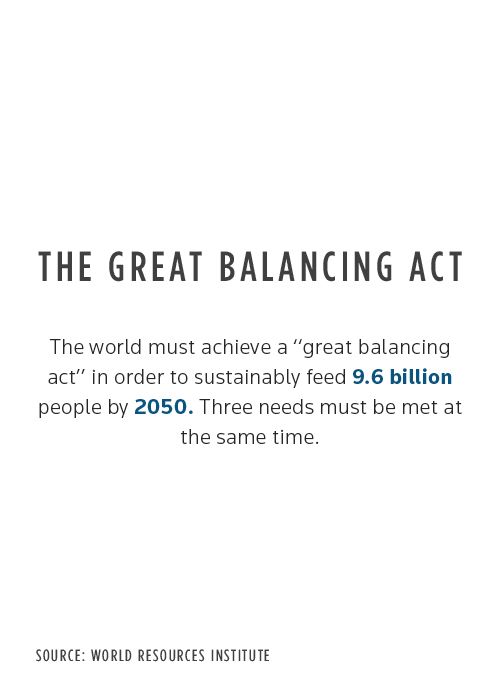
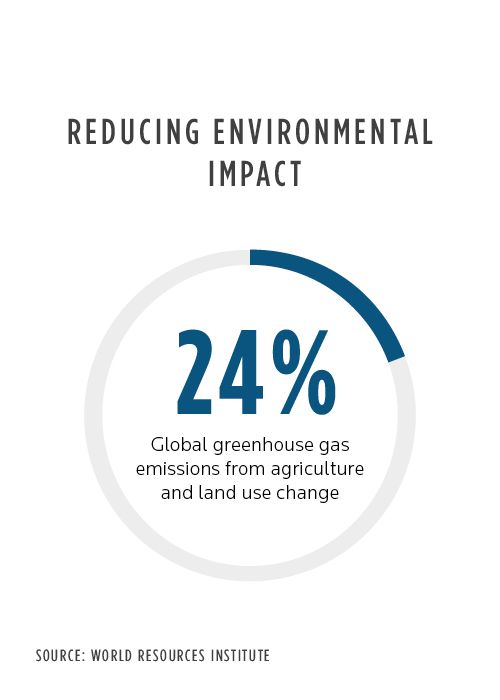

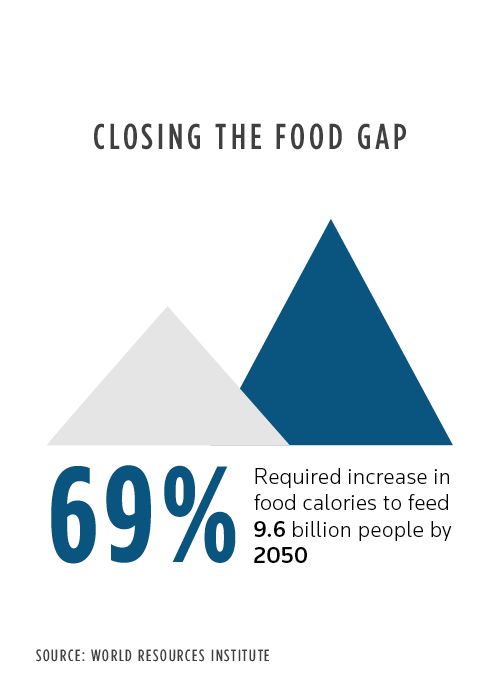
To grow enough food despite increasing water scarcity - agriculture today sucks up about 70 percent of global freshwater used each year - farmers are also looking to technology.
By tweaking a gene found in all plants, for instance, a team of international scientists have tricked tobacco plants into partially closing their stomata, microscopic pores in the leaf that let water evaporate.
The plants grew with a quarter less water and little impact on harvests, said Steven Long, a crop sciences professor at Britain's Lancaster University.
Researchers hope the tweak will work as well in cowpea and soybean, main sources of protein in developing countries, and in rice, a major staple food.
Despite the benefits of such innovations, some critics fear they could widen the divide between farmers who can access innovation and those who cannot.
Farms which rely mainly on family labour produce the bulk of food in developing countries but many cannot afford the latest agricultural technologies.
Many farmers also live in countries that lack access to reliable weather information, which can make planting and harvesting crops a risky endeavour, experts say.
Agriculture's technological revolution, in its current form, is neither inclusive nor democratic, said CIAT's Jarvis, in part because few of the innovations are aimed at small-scale farmers.
What those farmers grow is "not a monoculture of 20 hectares of lettuce production in California or Europe but half-hectare plots of maize," he said.
But farmers do have mobile phones, so finding ways to use them to improve farming is essential, added Jarvis, who co-founded the CGIAR Platform for Big Data in Agriculture.
One company bringing technology to small farmers is Hello Tractor in Nigeria, known as "Uber for tractors".
Founded by Jehiel Oliver, a former American investment banker, it started by selling two-wheel tractors equipped with GPS antennae - but most farmers found the prices too steep.
Hello Tractor now uses mobile phones to link those able to buy tractors with farmers who want to use tractor services.
"Most farmers can't afford to own a tractor and most tractor owners struggle to identify customers within rural, disjointed markets," Oliver said in an email.
A Kenya start-up, meanwhile, is banking on mobile phone technology to help small-scale farmers get much-needed credit from banks.
FarmDrive, founded by two Kenyan computer scientists - both women who grew up in farming families - aims to help farmers who need loans use satellite images and sensors to paint a detailed picture of their potential yields and risks.
In December, FarmDrive teamed up with Safaricom, Kenya's biggest telecoms company that set up the revolutionary mobile money platform M-Pesa.
Now Safaricom's DigiFarm mobile platform offers small farmers everything from discount vouchers for fertiliser to help getting small loans or training, all in one place.
Using the new platform, FarmDrive reached 10,000 farmers in four months, compared to just 5,000 farmers in two years when the company was working alone, co-founder Rita Kimani said.
"It's showing the possibility of partnerships ... and that's really how we are going to solve the challenges the farmers face. One tool or one organisation is not going to solve everything," she said.
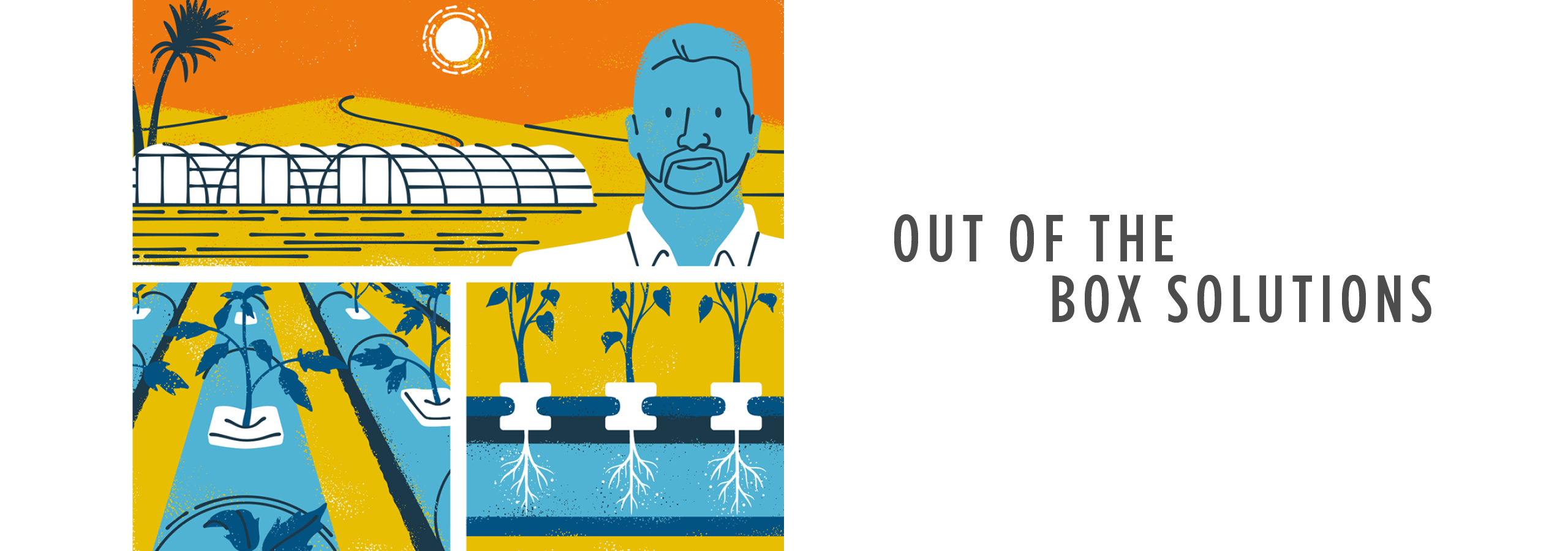
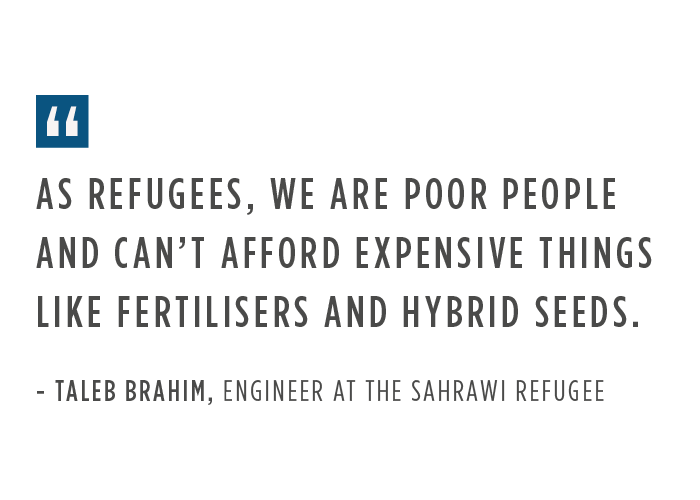
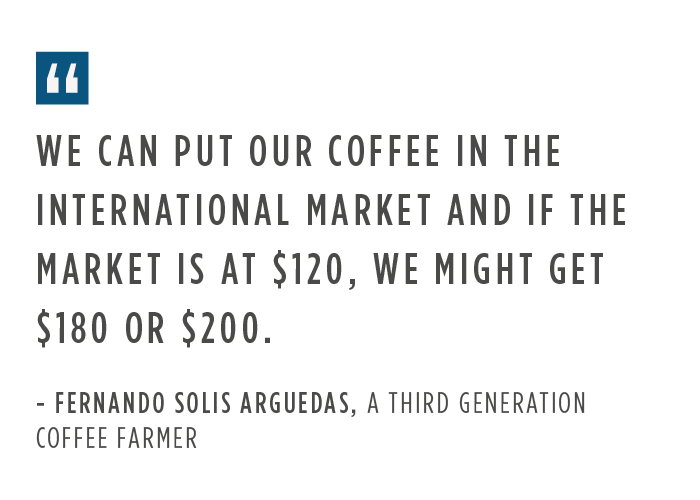
WATCH: Rebooting Food: Green in the desert
Others are coming up with more unusual solutions.
The Sahrawi refugee camps in western Algeria, near the border with Mauritania, Western Sahara and Morocco, might seem an unusual spot to try hydroponic farming, in which plants are grown in water rather than soil.
Land around the camps is arid, isolated and prone to sandstorms and extreme swings in temperature - and the 173,000 Sahrawis from Western Sahara, stuck in the camps for the past four decades, are nomads who prefer meat and milk.
But the pastoralists are now using bare-bones hydroponics units of metal and plastic to grow mats of barley as animal feed.
The plants - the only green thing visible for miles - are ready to use in just seven days, and are grown with just a tenth of the water needed for traditional crops.
"As refugees, we are poor people and can't afford expensive things like fertilisers and hybrid seeds," said Taleb Brahim, one of the brains behind the project.
Nearly 2,000 km (1,240 miles) east, in Ouargla in southern Algeria, date and palm farmers are similarly turning to an unusual strategy - rearing fish in the Sahara.
The switch is part of the North African nation's push to increase fish production as catches from the Mediterranean Sea dwindle.
The project aims to help farmers not only earn cash selling fish but also boost their harvests by using nutrient-rich water from fish ponds on crops.
At the Coopedota cooperative in Costa Rica, meanwhile, sustainable techniques such as reducing chemical sprays, planting more shade trees, and cutting energy and water consumption have brought an added benefit for farmers.
Beyond cutting costs and improving efficiency, they now sell the world's first officially certified carbon neutral coffee. Farmers hope customers will pay a premium.
"We can put our coffee in the international market and if the market is at $120, we might get $180 or $200," said grower Fernando Solis Arguedas, a third generation coffee farmer.
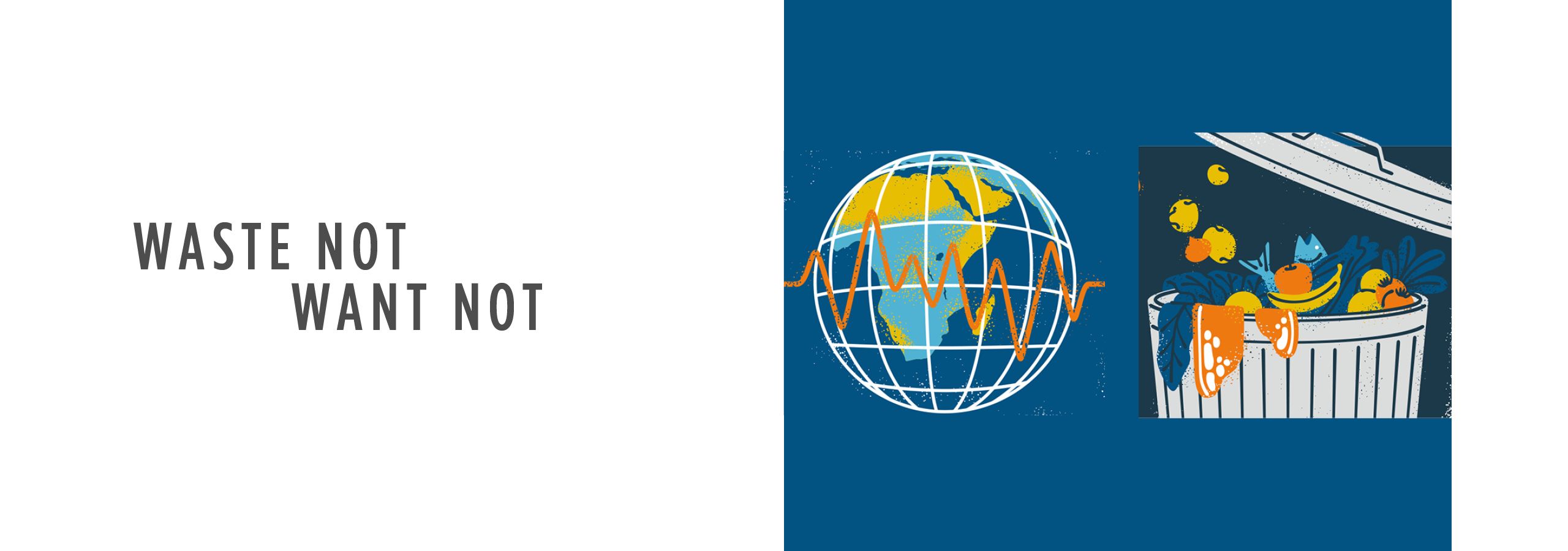
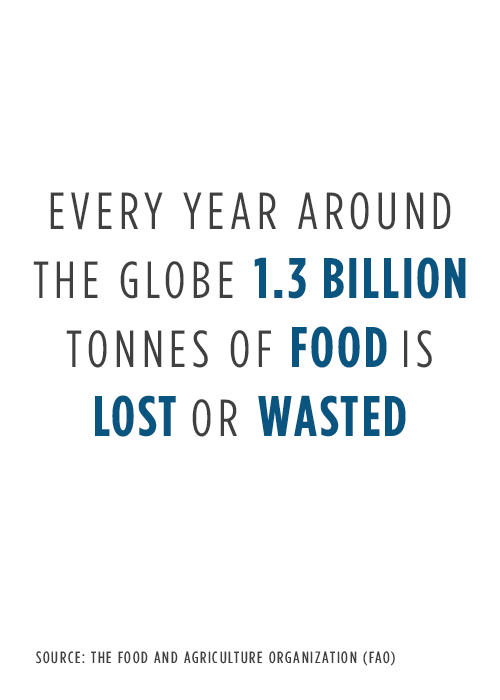
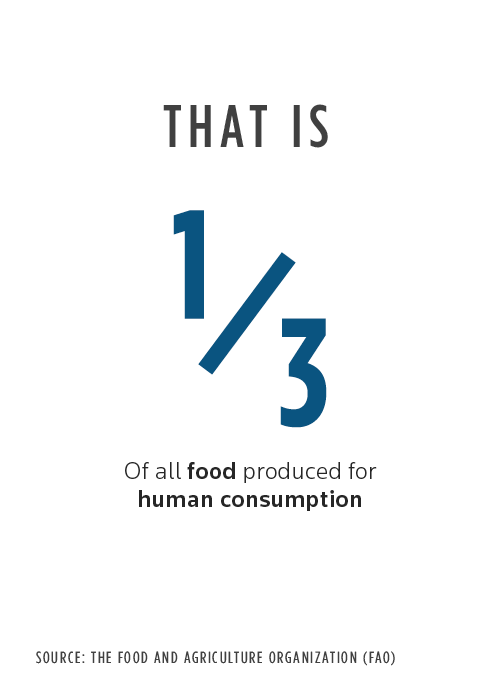
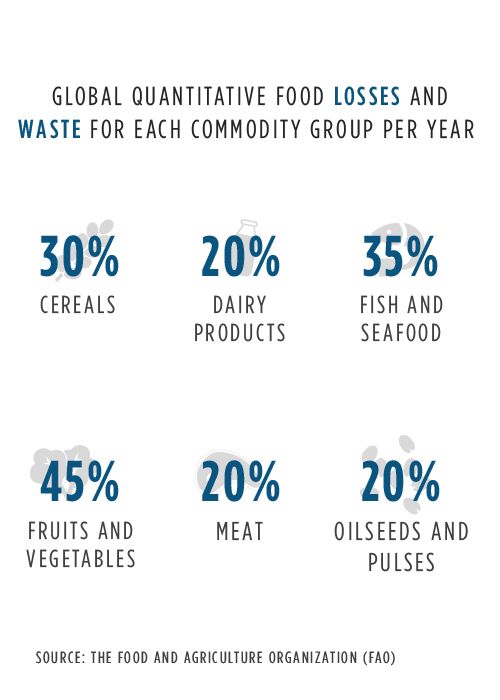
In developing countries about 40 percent of food grown is spoiled or lost after harvest. Then another 40 percent of what gets to retailers or consumers in developed countries is wasted, according to the FAO.
Cutting that waste is crucial to reducing climate change and growing demands on limited water and land, experts say. And now chefs are moving to the forefront of the effort.
In the leafy seaside town of Brighton, Silo, Britain's first zero-waste restaurant, turns leftover whey from making cheese into sauce, bread crust into miso soup and inedible parts such as egg shells and bones into compost.
Michelin-starred chef Massimo Bottura of Italy opened a new restaurant in central London last year, the Refettorio Felix, that doesn't welcome wealthy diners but caters for the poor with meals cooked from supermarket scraps.
WATCH: Food waste warriors: The Community Kitchen - Refettorio
In Leeds, in northern England, Adam Smith's The Real Junk Food Project started out as a single cafe in 2013, taking food destined for landfills to local schools to support low-income families and teach pupils about food waste.
It has since ballooned into a network of more than 120 eateries and stores, including Britain's first pay-what-you-like food waste supermarket, offering anything from zucchini to breakfast cereals.
Smith says he hopes one day the network will go out of business, as food waste is reduced from field to plate.
"Ideally the measure of success ... would be that we would no longer be here," he said.
Richard Horsey, co-author of "Ugly Food: Overlooked and Undercooked", thinks part of achieving that is persuading people to diversify what they cook and include things they might bin.
He lists octopus, pigs' trotters and wild rabbit as some of the ingredients often overlooked in Anglo-Saxon food cultures.
"I really do think that if you can make a change to what people are putting on the table every evening, that's where the numbers are, that's where the impact is," he said.
A more diverse diet is also is a resilient one, experts say.
Historically, farmers cultivated at least 7,000 plants to eat but today 60 percent of global calories come from just three plants - wheat, rice and maize.
Helping Asia - known for its insatiable appetite for rice - eat more millet, a forgotten rural diet staple that is rich in protein and can grow in salty soil - could help keep harvests sufficient as climate change takes hold, experts say.
Buyers in Taiwan, Japan, South Korea and Hong Kong are already eating less rice, while India is pushing millets as a way to reduce a stubbornly high rate of malnutrition.
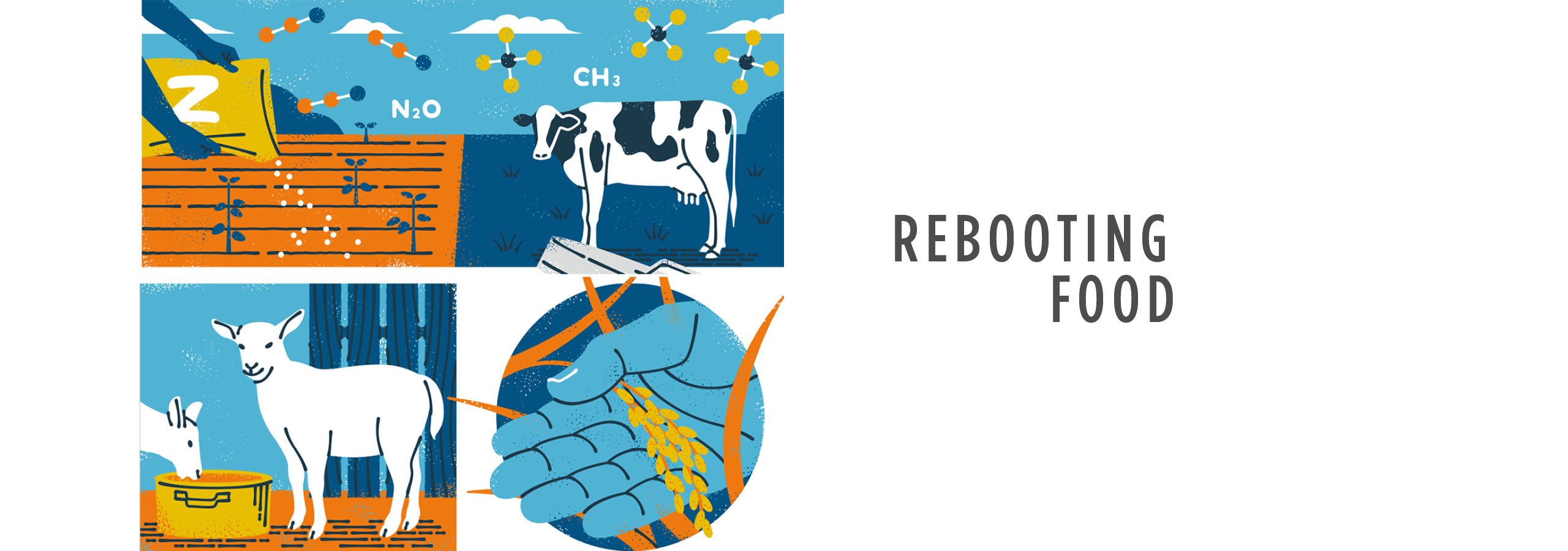
Technological advances hold promise to make food systems work better. But experts warn there are no quick wins when it comes to reshaping something as fundamental as food and agriculture.
"Technologies are just a tiny part in the whole puzzle," said Tom Anyonge, lead technical specialist for IFAD.
Policies, institutions and food systems also need shifts if technology is to achieve its potential, he said.
He pointed to M-Pesa, which lets mobile phone users transfer or borrow money, pay bills and save via texts. Launched by Kenya's Safaricom in 2007, it now has nearly 28 million users in a nation of 45 million and has been expanded or mimicked across Africa.
Its success is due not just to the pioneering technology but to efforts behind the scenes to make it work, Anyonge said.
Those include improving mobile coverage, opening up Kenya's telecoms sector, and enacting laws allowing partnerships between mobile companies and banks.
"It would have stayed as a good idea" if not for that help, he said. "You need to touch on so many other things beyond technology."
IFPRI's director-general Fan agrees.
Innovations are key to rebooting the food system - but they should not be limited to just technological ones, he said.
"Innovation in policies, innovations in institutions, innovations in even new thinking, open-mindedness, will be important," he said.
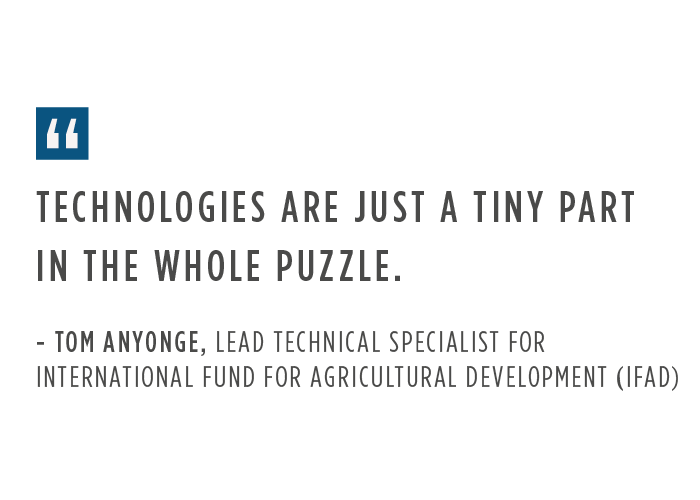
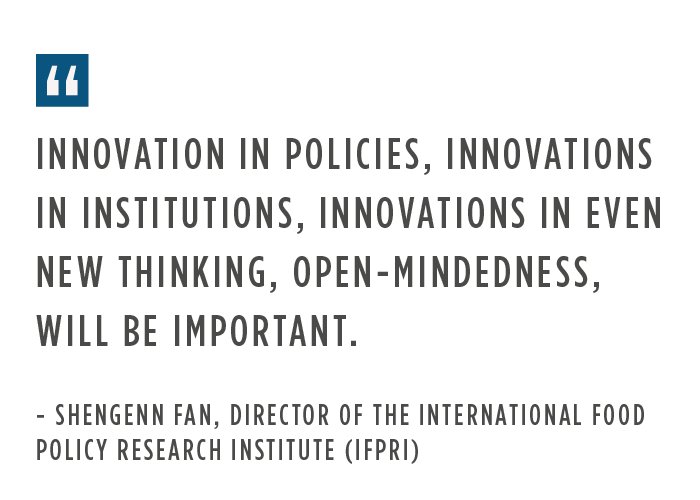
Credits
| Text | Thin Lei Win | Text editing | Belinda Goldsmith and Laurie Goering |
| Additional Reporting | Umberto Bacchi, Rina Chandran and Sophie Hares |
| Graphic designers | Teia Kay and Laura Foley |
| Illustration | Kouzou Sakai | Multimedia Producer | Cormac O'Brien |
| Executive Producer | Georgina Cooper |

